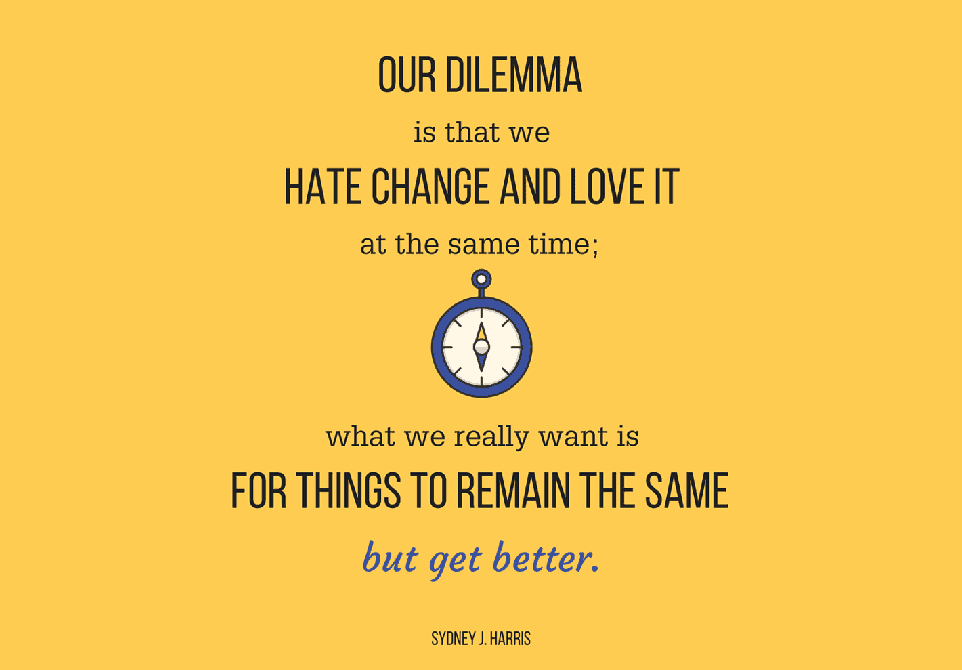No Adult Left Behind: 3 Tips for Rethinking Teacher Roles

Last in, first out. This is how many districts think about support staff and non-instructional positions. When budgets loosen up some, many districts begin hiring instructional coaches, instructional technologists, additional library media coordinators, and other support roles typically staffed by former classroom teachers looking to support their peers and vicariously their students. But when budgets tighten, districts often make the decision that these support roles are among the first on the chopping block. It’s frustrating and nobody wants to cut staff (or, in many cases, simply not fill a vacated position) but it creates an interesting staffing problem to be in a constant state of flux between too many (in budgetary terms) and not enough support positions.
As an educator, both in the classroom and in one of these support roles, of course I wanted to see as many people as possible get the services they need. In North Carolina last year, there was a raging debate about the number of teaching assistants that should be funded by the State, their overall value to the classroom experience, and (of course) their impact on student learning. As much as I love a good political debate and as happy as I am to argue for additional support mechanisms for teachers, pragmatism forces me to play the hand that’s dealt. To play this hand, though, I need to acknowledge inefficiencies already at work.
It’s not a fun conversation to have, frankly, but it’s important to acknowledge the ways that staff are being leveraged. Are classroom teachers simply being given more and more and more responsibilities? With the onslaught of new programs, initiatives, and technologies, how are they getting both the training and planning time to fully incorporate what you’re hoping to see change in classrooms? And if you’re going to give teachers new things to do, what old things are you going to ask them to stop doing? You might need some patience and persistence, but here are three tips for rethinking roles and getting the best use out of your staff:
Find out staff strengths
You have to start here. I recommend StrengthsQuest, but you could use any number of similar assessments, including just a poll of your staff to ask about the things that make them feel successful, what they like to do, etc.
Here’s the main idea: Before you can begin rethinking roles and how to best support teachers, you have to know what they’re good at, what they like to do, and what they’d delegate the minute it was an option.
For example, I love digging into new ideas, finding and testing the latest and greatest trends, and figuring out how to make that work for the learners I’m working with. But curriculum mapping? Let’s just say that’s not one of my strong suits.
Key insight: It’s just as important to know what you’re not good at as what you are.
Identify and Group the Work to Be Done
To be an effective teacher, there are certain things that have to get done. Are the roles and expectations of your staff changing with each new initiative, program, or technology? (Hint: they probably are!) This list is best done with a group where you each work individually and then share out your lists, creating a single master-list of everything that has to get done.
While you’re at it, include the jobs or functions that you’d like to see from those mythical support roles. What would you hire them to do? (Bonus: mix up the support roles with your teacher roles. Trust me.)
Key insight: There’s a lot on a teacher’s plate. We know this, but seeing it written out will make a difference in how you think about the next step.
Question Your Assumptions & Shuffle the Deck
Generally speaking, there isn’t a rule that says every teacher has to be responsible for everything on the list you made in the last step. Some teachers will naturally gravitate and excel in certain areas while struggling in others. Traditionally, when we’ve been able to get support staff in place, their job was that of a firefighter: put out the “fires” that arise from working in an area of weakness rather than strength.
Here’s where your real opportunity lies: focus on pairing up staff strengths with identified roles or jobs to be done. Have a teacher that’s a great curriculum mapper and would be ok giving up some of the face-to-face instruction? Or a teacher that is truly amazing when she’s working with students directly, but always seems to be disorganized or not sure where she’s heading next? Have these teachers work together, with the latter taking on more of the instruction and the former taking more of the planning. Want one of your very innovative teachers to have more time to explore new ideas? Shuffle the deck and find ways to restructure what it means to be a teacher on your campus.
Key insight: Instead of the one-size-fits-all approach to staffing, think about what needs to get done and how your current staff could better leverage their strengths and preferences towards a more efficient (and effective) teaching staff.
Who knows? You might even find yourself needing fewer positions while retaining excellent student-to-teacher ratios AND providing the support teachers need to be successful. Don’t let the excellence your teachers demonstrate in one area of their work be overshadowed by a weakness in another area that could have been delegated to someone else more than willing to do that job. Make no mistake: this is not an easy task nor will it be met without resistance. But it’s worth it.
For more on creative staffing, look at the excellent work that national non-profit TNTP has done around many of these ideas and I would encourage you to delve into their body of research. There are schools beginning to rethink what it means to deliver instruction and finding ways that also better meet the needs of their students. We know one-size-fits-all doesn’t work for teaching, who says it is working for our teachers?
For more blogs by Greg, check out:
- Undoing EduSpeak and Why Words Matter
- Mozilla and the Quest for Universal Web Literacy
- Edmodo: A Platform Redefining Learning
Stay in-the-know with all things EdTech and innovations in learning by signing up to receive the weekly Smart Update.








0 Comments
Leave a Comment
Your email address will not be published. All fields are required.